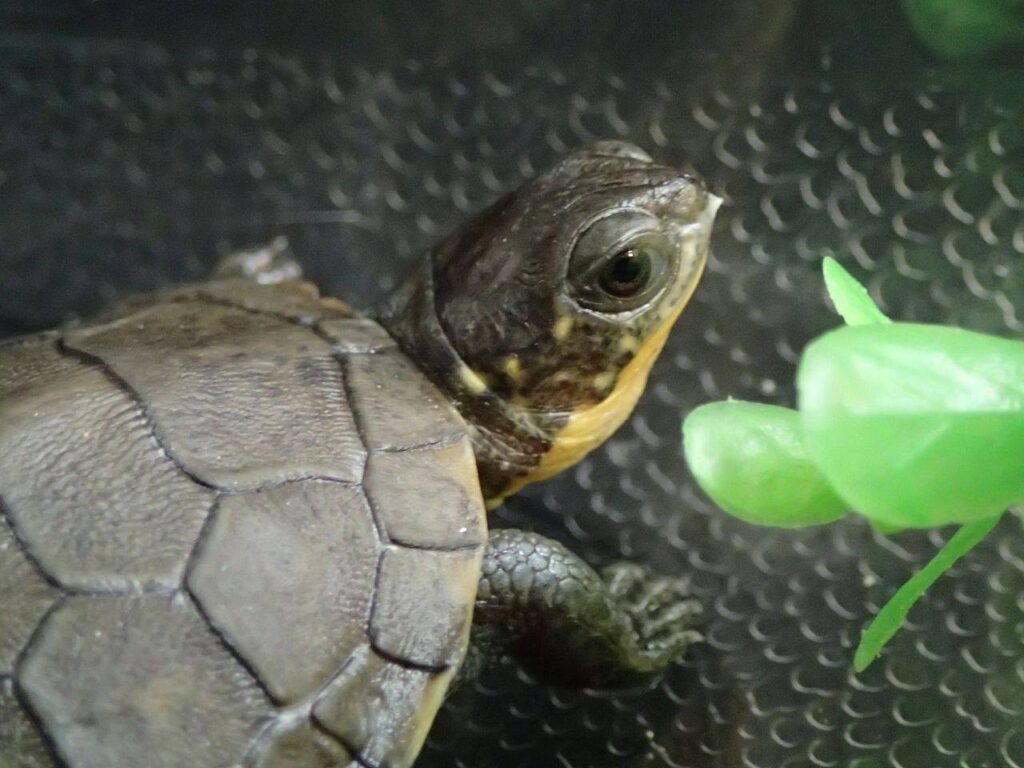There are perhaps 500 Blanding’s turtles left in Nova Scotia.
The tiny turtles, especially the very teeny young ones, are the favoured prey of raccoons, skunks, herons and weasels. The population is also the victim of habitat loss and fragmentation.
“In the wild, more than 80 per cent of the nests fall prey to predators,” Parks Canada says.

In 2005, the Committee on the Status of Endangered Wildlife in Canada rated the Nova Scotia populations of the Blanding’s turtle “endangered,” up from “threatened,” and therefore, a “species at risk.”
But Parks is trying to do something to preserve the species, which is the rarest of the turtles found in Kejimkujik National Park and National Historic Site.

And they’re doing it with technology — and people power.

“Parks Canada biologists track turtles with a radio transmitter attached to their shells to determine how best to protect the population,” officials explained.
They collection information such as where they go in winter, what type of habitat they use, which is crucial to understanding how to protect them and where they live, according to Parks.

A group of volunteers has been protecting the turtles for over two decades.

They’ve been doing thinks like keeping track of the turtles, placing boxes of nesting sites and releasing them when they’re better prepared to take on the world.
They turtles can live to 80 years old, but don’t nest until they are 20.
They grow to about 22 cm long, and are pretty distinctive looking with dark green dome-shaped shell covered with yellow flecks. Their chins and necks are bright yellow.

“Take a look at these #turtles on the move!” Parks tweeted this week.
We’ll be sure to follow them along.
Take a look at these #turtles on the move! 🎵 Follow along with biologists in #Kejimkujik NP and NHS as they track turtles with a radio transmitter attached to their shells to determine how best to protect the population. 🐢 #ParksInsider @ParksCanada_NS https://t.co/2pAbICq6lU
— Parks Canada (@ParksCanada) April 20, 2021




